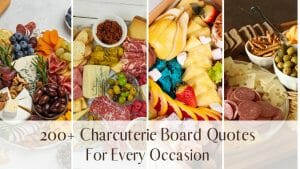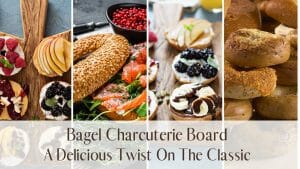Welcome to the delectable world of charcuterie, where an artful arrangement of cured meats, cheeses, and delectable accompaniments awaits. While charcuterie boards have gained immense popularity, one crucial element often steals the spotlight – bread. The right bread can elevate the entire experience, bringing balance, texture, and an extra layer of indulgence to each bite. In this comprehensive guide, we embark on a flavorful journey to uncover the best bread options for your charcuterie board. Prepare to discover the perfect loaves that will complement and enhance the flavors of your favorite meats and cheeses. From crusty baguettes to rustic sourdoughs, we'll delve into the art of bread selection, unraveling the secrets of pairing and creating exceptional flavor combinations. Get ready to take your charcuterie game to new heights as we explore the remarkable world of bread and charcuterie.
TIP: Unlock the art of charcuterie quickly and join over 514K enthusiasts! Click here to elevate your food art game now >>
Table of Contents [CLICK HERE TO OPEN]
- What We'll Be Covering
- Understanding the Significance of Bread in Charcuterie Boards
- Exploring the Different Types of Bread for Charcuterie Boards
- Tips for Selecting the Perfect Bread for Your Charcuterie Board
- Presentation and Serving Suggestions
- Storing and Refreshing Bread
- Wrapping It Up
- Frequently Asked Questions
What We'll Be Covering
In this comprehensive guide, we embark on a mission to uncover the best bread options for your charcuterie board. We understand that no two boards are alike, and the bread you choose should harmonize with the specific flavors and textures you're aiming to achieve. From delicate and mild to bold and robust, we'll explore a range of bread varieties that will complement your charcuterie ensemble with finesse.
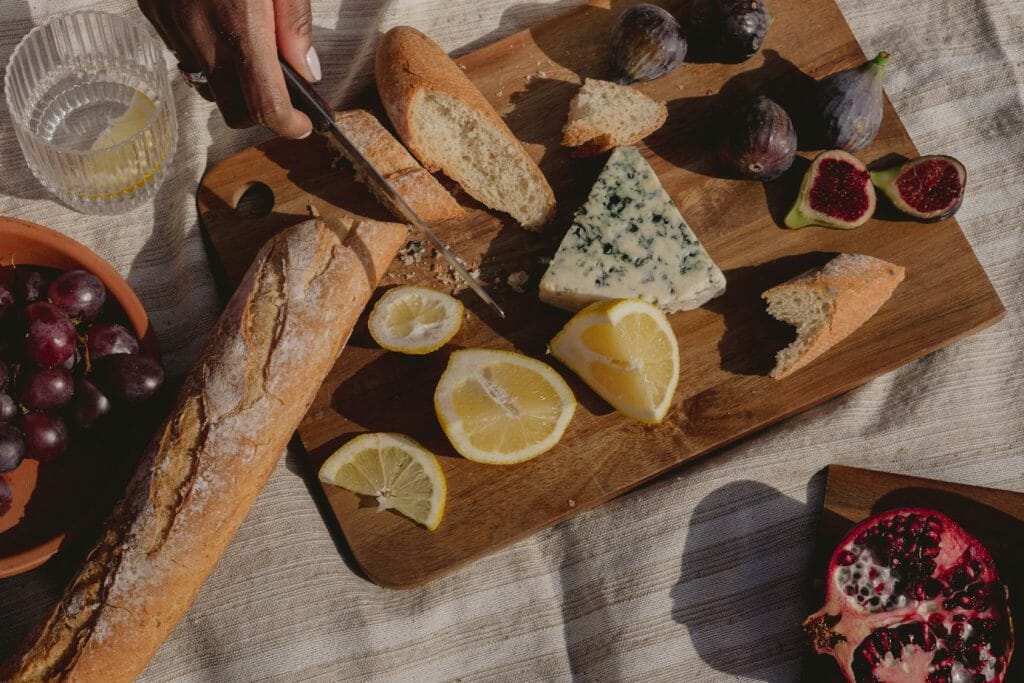
Imagine a slice of freshly baked baguette, its crust golden and crisp, providing a delightful crunch that contrasts beautifully with the creamy softness of a Camembert cheese. Or picture a rustic sourdough, with its tangy notes, enhancing the savory richness of a smoked salami. The possibilities are endless, and we're here to guide you through the art of bread selection, helping you create a charcuterie board that delights the senses.
Our aim is to provide a comprehensive guide that goes beyond mere recommendations. We want to empower you to make informed choices, understanding the nuances of bread and its relationship with the other components on your charcuterie board. We'll explore the characteristics of different bread types, their flavor profiles, and their ability to harmonize with various meats, cheeses, and accompaniments.
So, join us on this mouthwatering journey as we uncover the best bread options for your charcuterie board. Get ready to elevate your charcuterie experience, one delectable slice at a time. Together, we'll ensure that your next charcuterie masterpiece leaves your guests in awe and craving for more. Let's dive into the world of bread and charcuterie magic!

Understanding the Significance of Bread in Charcuterie Boards
Bread, oh glorious bread! Its presence on a charcuterie board is not merely an afterthought but a fundamental component that elevates the entire experience. Beyond being a simple accompaniment, bread acts as a versatile vehicle for delivering the delightful flavors of the charcuterie ensemble to your taste buds.
One of the primary roles of bread in a charcuterie board is its ability to balance the richness, savoriness, and saltiness that often dominate the cured meats and cheeses. It serves as a neutral base, providing a subtle canvas that harmonizes and enhances the flavors of the other components. The right choice of bread can help cut through the intensity of a bold salami or bring out the creaminess of a delicate goat cheese.
Picture this: a slice of freshly baked, crusty bread carrying a thin layer of tangy mustard, topped with a paper-thin slice of prosciutto and a sprinkling of peppery arugula. As you take a bite, the bread acts as a buffer, mellowing the saltiness of the cured meat while imparting its own toasty notes. The result? A perfectly balanced explosion of flavors in every mouthful.
But it's not just about taste. The visual appeal of a charcuterie board is enhanced when bread is thoughtfully incorporated. Imagine a rustic baguette nestled among a variety of cured meats, cheeses, and vibrant garnishes. Its presence adds texture, height, and a welcoming invitation to tear off a piece and indulge. The interplay of colors, shapes, and sizes on the board becomes more dynamic and enticing with the inclusion of bread.
The Importance Of Choosing The Right Bread
To ensure that your charcuterie board delivers a memorable experience, it's crucial to choose the right bread that complements the flavors and textures of the other components. Whether it's a crusty baguette, a pillowy ciabatta, or a tangy sourdough, each type of bread brings its own unique characteristics to the ensemble. Consider the density, crustiness, flavor profile, and moisture content of the bread in relation to the cured meats and cheeses you've selected. Aim for a harmonious balance that delights both the palate and the eye.
Now that we understand the significance of bread in charcuterie boards, let's delve into the world of bread varieties and discover the best options that will take your charcuterie experience to new heights. In the following sections, we'll explore different bread types, their distinct qualities, and how they interact with various meats, cheeses, and accompaniments. Prepare to embark on a delicious adventure where bread becomes an integral part of the charcuterie symphony.
But before we dive in, let's remember that the ultimate goal is to create a charcuterie board that brings joy and satisfaction to both you and your guests. The right bread selection will not only enhance the flavors and presentation but also spark conversations, ignite appetites, and create lasting memories. So, let's continue our journey to uncover the best bread options for your charcuterie board and make every bite an extraordinary experience.
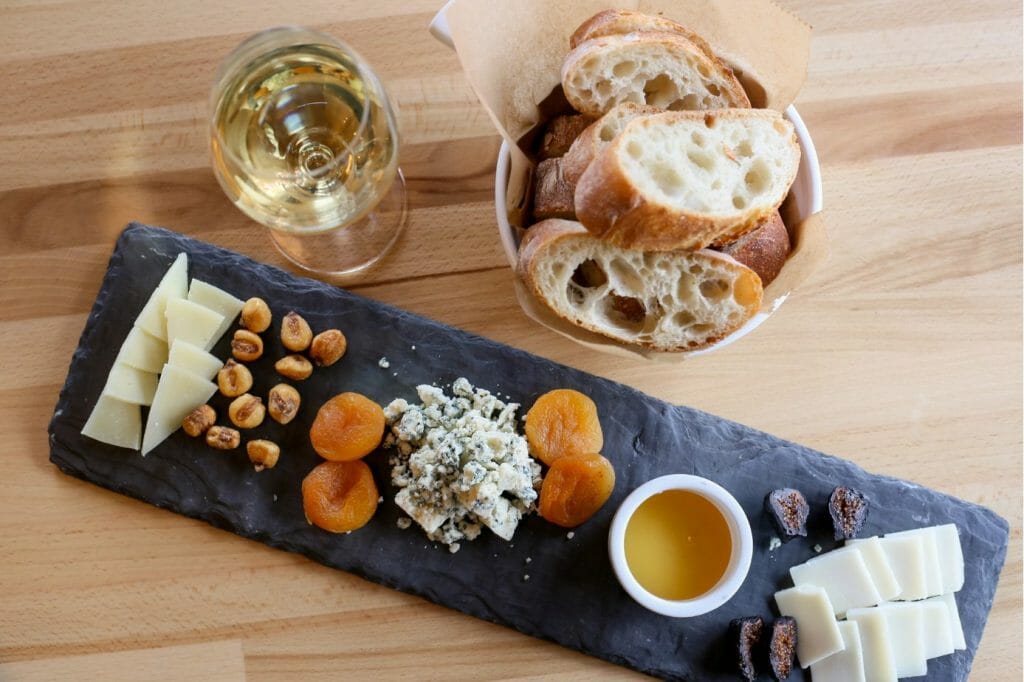
Exploring the Different Types of Bread for Charcuterie Boards
Baguette Variations
When it comes to charcuterie boards, the classic baguette reigns supreme. Its crusty exterior and soft, chewy interior make it an ideal vessel for showcasing cured meats and cheeses. Slice it diagonally into bite-sized pieces for easy handling, or leave it whole for an impressive centerpiece. For added variety and convenience, consider incorporating mini baguettes or baguette slices. These smaller versions provide a delightful twist and allow guests to explore different bread textures while savoring the charcuterie delights.

Specialty Bread Varieties
Step outside the realm of traditional bread and explore specialty varieties that add an extra layer of flavor to your charcuterie board. Sourdough, with its tangy notes and rustic texture, pairs beautifully with robust meats like salami or prosciutto. Rye bread offers a hearty and slightly earthy taste that complements the smokiness of cured sausages. If you're catering to gluten-free guests, opt for gluten-free bread options made from alternative grains like quinoa or buckwheat. These breads can cater to various dietary preferences without compromising on taste.

Flavored Bread Options
For a burst of excitement, consider incorporating flavored breads into your charcuterie board. Garlic bread brings a punch of savory aroma, while herb-infused breads like rosemary or thyme add an aromatic touch that complements delicate cheeses. Olive bread introduces a delightful briny flavor that pairs well with Mediterranean-style charcuterie. Cheese bread, with its gooey and melty pockets of cheesy goodness, elevates the overall taste profile of your board. And for a touch of sweetness, indulge in fig and walnut bread, which adds a subtle nuttiness and fruity undertones.
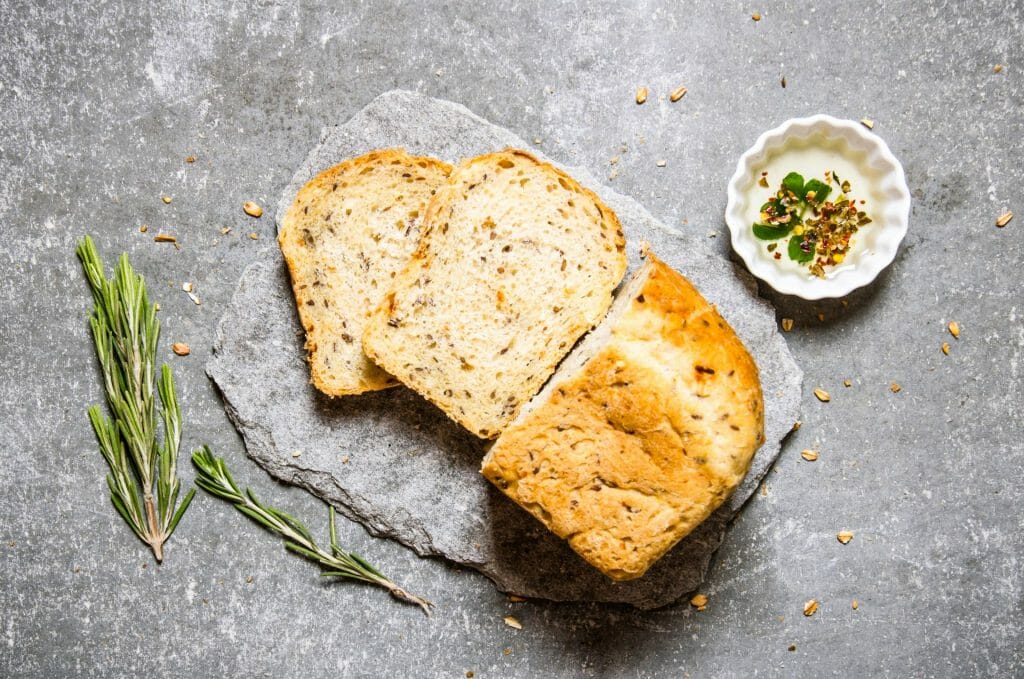
Alternative Bread Choices
Why limit yourself to traditional bread options? Embrace creativity and explore alternative choices that can take your charcuterie board to new heights. Crostini, thin slices of toasted baguette, provide a crispy foundation for showcasing your favorite toppings. Breadsticks offer a crunchy and portable option that guests can use to scoop up delectable spreads or wrap with cured meats. Naan bread brings a touch of Indian flair, pairing well with spiced meats and chutneys. Cornbread, with its slightly sweet and crumbly texture, adds a Southern twist to your charcuterie experience. And if you're looking for a unique and pretzel-like texture, pretzel bread delivers with its chewy exterior and soft interior.
By exploring the wide array of bread options, you can create a charcuterie board that caters to diverse palates and preferences. Combine different bread varieties to enhance the visual appeal and offer a range of textures and flavors. Remember to consider the specific charcuterie combinations you're assembling and select bread that complements the ingredients harmoniously. Whether it's a traditional baguette, a specialty sourdough, a flavored bread, or an alternative choice, each bread selection brings its own distinct character to the charcuterie symphony.
Now that we've explored the world of bread for charcuterie boards, let's move on to the next section, where we'll delve into the art of pairing bread with specific cured meats and cheeses. Get ready to discover the perfect harmony of flavors and textures that will make your charcuterie board an unforgettable feast for the senses.

Tips for Selecting the Perfect Bread for Your Charcuterie Board
Flavor Pairings
Pairing the right bread flavors with your charcuterie meats and cheeses can elevate the taste experience to new heights. Consider the profiles of your chosen cured meats and cheeses and select bread that harmonizes with their flavors. For example, a smoky salami can be complemented by a tangy sourdough, while a creamy brie might find a perfect match in a crusty baguette. Here are a few popular and successful combinations to inspire you:
Prosciutto and fig and walnut bread: The sweet notes of the fig and walnut bread enhance the delicate saltiness of the prosciutto.
Smoked sausage and rye bread: The robust flavor of the rye bread stands up to the smokiness of the sausage, creating a satisfying balance.
Blue cheese and olive bread: The briny and savory flavors of the olive bread provide a perfect contrast to the bold and creamy blue cheese.
Remember, these are just starting points, and the beauty of charcuterie boards lies in experimentation. Don't be afraid to try unique flavor pairings that suit your palate and surprise your guests.
Considerations for Texture and Crunch
Texture plays a crucial role in the overall enjoyment of a charcuterie board. When selecting bread, think about how its texture will interact with the other components on the board. For added texture and crunch, consider options like toasted or grilled bread. Toasted baguette slices provide a delightful crispiness that can complement creamy cheeses or add a satisfying contrast to cured meats. Grilled bread, with its charred marks and smoky flavor, adds a rustic touch and enhances the complexity of flavors. Including a variety of textures will keep your guests engaged and make each bite a delightful experience.
Catering to Dietary Needs and Preferences
A thoughtful host considers the dietary needs and preferences of their guests when assembling a charcuterie board. Fortunately, there are bread options available to cater to various dietary restrictions or preferences. If you have gluten-free guests, offer gluten-free bread alternatives made from grains like rice, corn, or quinoa. These options ensure that everyone can enjoy the charcuterie experience without compromising their health or preferences. For vegan guests, explore bread choices that are free from animal products, such as vegan baguettes or artisanal bread made with plant-based ingredients. By providing inclusive options, you can ensure that everyone feels welcome and satisfied.
By considering flavor pairings, texture and crunch, and dietary needs and preferences, you can curate a charcuterie board that not only delights the taste buds but also caters to the unique preferences of your guests. Experiment with different bread selections and combinations, keeping in mind the principles we've discussed, to create a memorable and personalized charcuterie experience.
In the next section, we will delve into the art of arranging and styling your charcuterie board to create a visually stunning display. Join us as we explore the secrets behind an Instagram-worthy presentation that will impress your guests and leave them eager to indulge in the charcuterie delights.
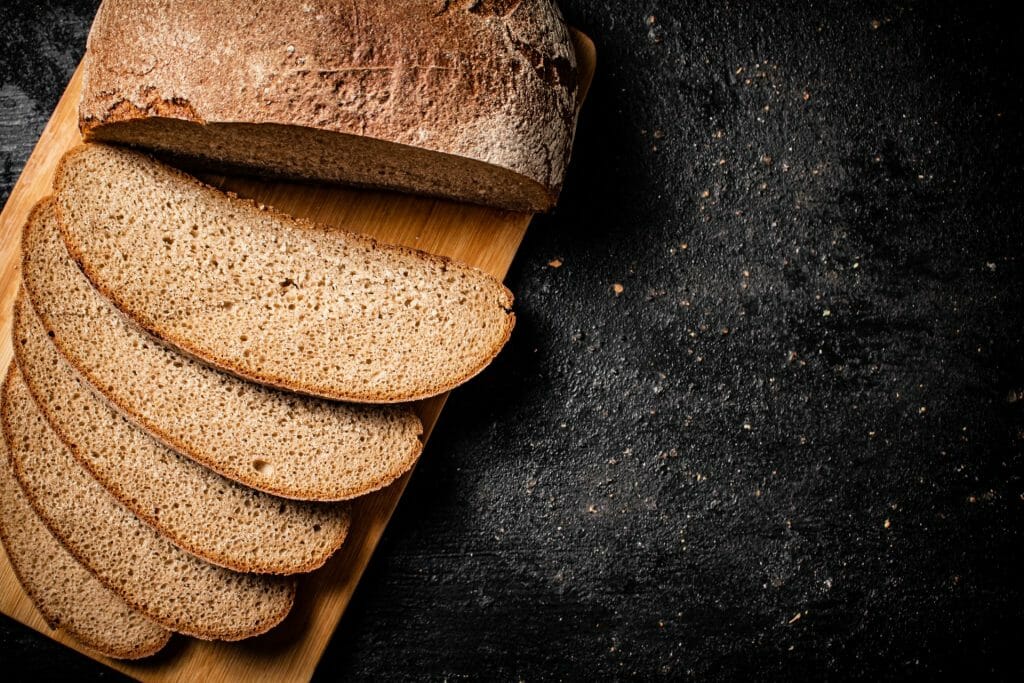
Presentation and Serving Suggestions
Creative Bread Display
When it comes to creating an enticing charcuterie board, the presentation is key. The way you arrange and display the bread can elevate the visual appeal of your spread and enhance the overall experience. Here are some ideas to inspire your creative bread display:
Bread Basket: Place a rustic woven bread basket in the center of your charcuterie board and fill it with an assortment of bread slices or rolls. This not only adds a charming touch but also makes it easy for guests to grab their preferred bread.
Bread Fans: Create a visually stunning arrangement by fanning out slices of baguette or mini baguettes in an overlapping pattern. This adds a sense of elegance and invites guests to help themselves to the bread.
Bread Towers: Stack slices of different bread varieties in varying heights to form mini towers. This adds visual interest and allows guests to choose their desired bread type easily.
Remember to consider the color and texture of the bread as you arrange them. Mix and match different types of bread to create a visually appealing contrast. Additionally, intersperse the bread with other elements like fresh herbs, small bowls of spreads, or decorative accents to enhance the overall aesthetic of your charcuterie board.
Slicing and Serving Techniques
To ensure that your bread is easy to consume and pairs well with the charcuterie items, it's important to consider slicing and serving techniques. Here are some helpful tips:
Slicing: Cut the bread into manageable slices or pieces that are easy to pick up and bite-sized. For baguettes, slice them diagonally to create elongated pieces. Slicing the bread at an angle adds a touch of elegance and makes it easier to handle.
Portion Sizes: Consider the size of your gathering and the number of guests when determining the quantity of bread to serve. As a general guideline, plan for 1-2 slices or pieces of bread per person. Adjust this amount based on the appetites of your guests and the overall variety of your charcuterie board.
Bread Placement: Strategically place the bread around the board, ensuring that it is easily accessible to guests. Consider spreading the bread slices throughout the board, allowing guests to pair them conveniently with different meats, cheeses, and accompaniments.
By paying attention to the creative display of bread and implementing proper slicing and serving techniques, you can enhance the overall aesthetics and functionality of your charcuterie board. These details contribute to a memorable and enjoyable dining experience for your guests.
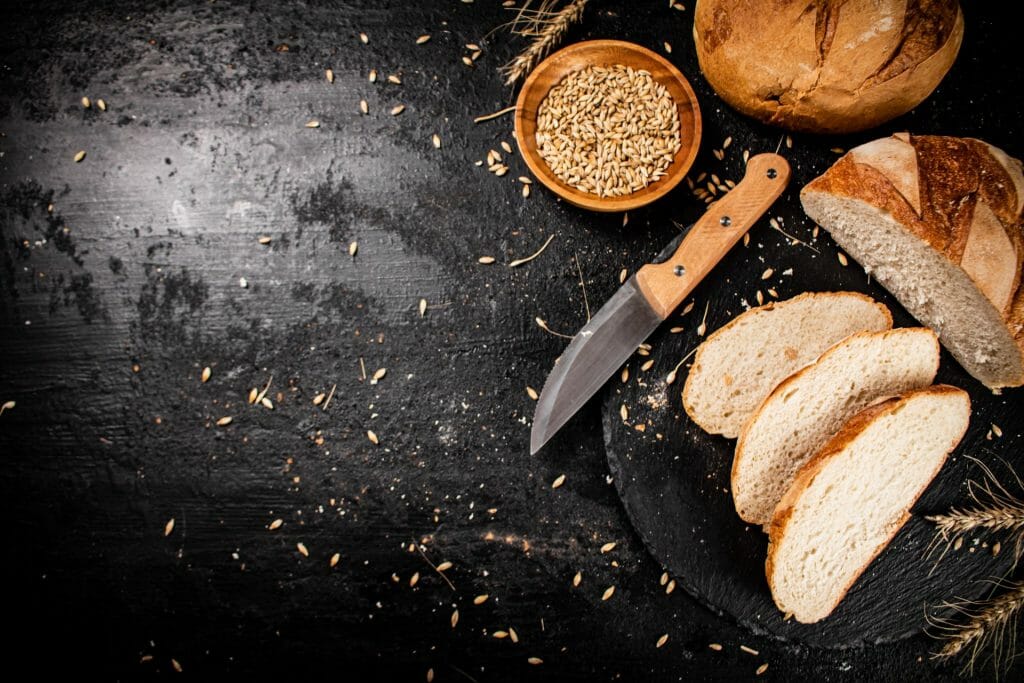
Storing and Refreshing Bread
To fully enjoy the flavors and textures of your charcuterie board, it's essential to keep your bread fresh and delicious. Here are some tips on storing bread and refreshing it when needed:
Proper Storage
To maintain the freshness of your bread, follow these guidelines:
Bread Box: Store bread in a bread box or a cool, dry place away from direct sunlight. This helps prevent moisture loss and keeps the bread from becoming stale too quickly.
Plastic Bag: If you don't have a bread box, place your bread in a resealable plastic bag, squeezing out excess air before sealing it. This creates a slightly humid environment, keeping the bread from drying out.
Freezing: If you have leftover bread or want to stock up, freezing is a great option. Wrap the bread tightly in plastic wrap or aluminum foil, then place it in a freezer bag. When ready to use, thaw it at room temperature or heat it briefly in the oven.
Remember to avoid storing bread in the refrigerator, as the cold temperatures can accelerate the staling process.
Reviving Stale Bread
If your bread has gone stale, don't despair! There are ways to revive it and bring back its fresh taste and texture:
Sprinkle with Water: Lightly moisten the surface of the bread with water, then place it in a preheated oven at a low temperature (around 300°F or 150°C) for a few minutes. The steam created by the water will help soften the bread.
Toasting: Toasting stale bread can also breathe new life into it. Slice the bread, then toast it in a toaster or under the broiler until it becomes crispy and golden. The toasting process adds a delightful crunch and brings out the flavors.
By following these storage tips and knowing how to refresh stale bread, you can ensure that your charcuterie board is always accompanied by fresh and delightful bread.
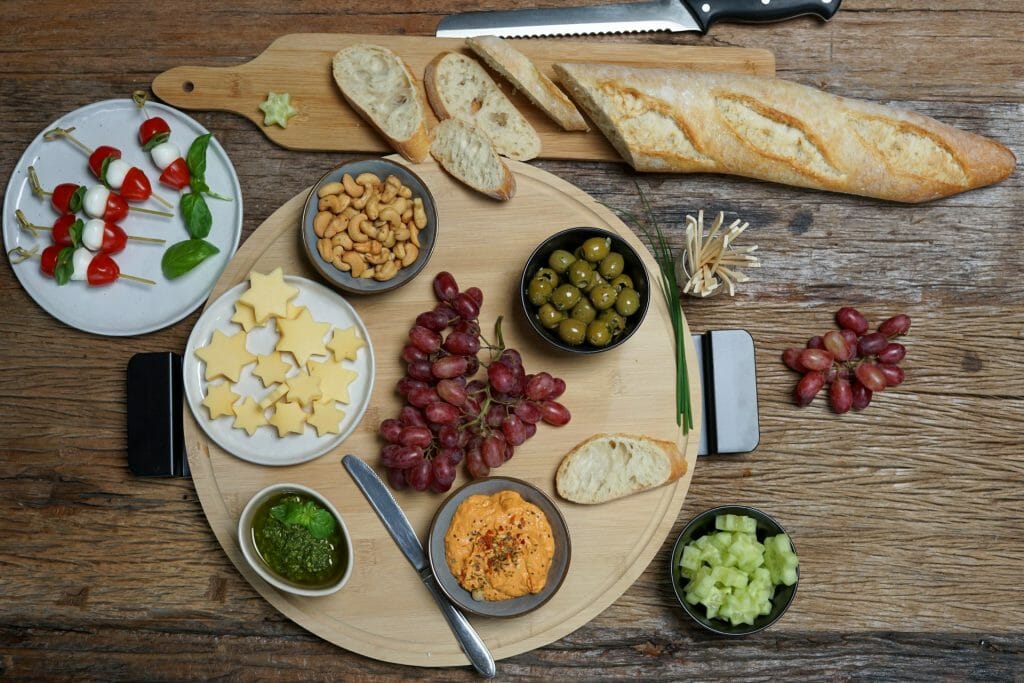
Wrapping It Up
Bread is undoubtedly a key component of a well-crafted charcuterie board, adding depth and variety to the overall experience. Throughout this article, we explored the significance of bread in charcuterie boards, the different types of bread suitable for this purpose, and tips for selecting the perfect bread.
Now armed with knowledge and inspiration, it's time to let your creativity shine. Personalize your charcuterie board by experimenting with different bread choices, charcuterie meats, cheeses, fruits, and condiments. Mix and match flavors, textures, and colors to create a masterpiece that reflects your unique taste and style.
Remember, the best bread for a charcuterie board is the one that brings joy and satisfaction to your taste buds. So, go forth, explore, and savor the wonderful world of charcuterie with the perfect bread by your side. Bon appétit!
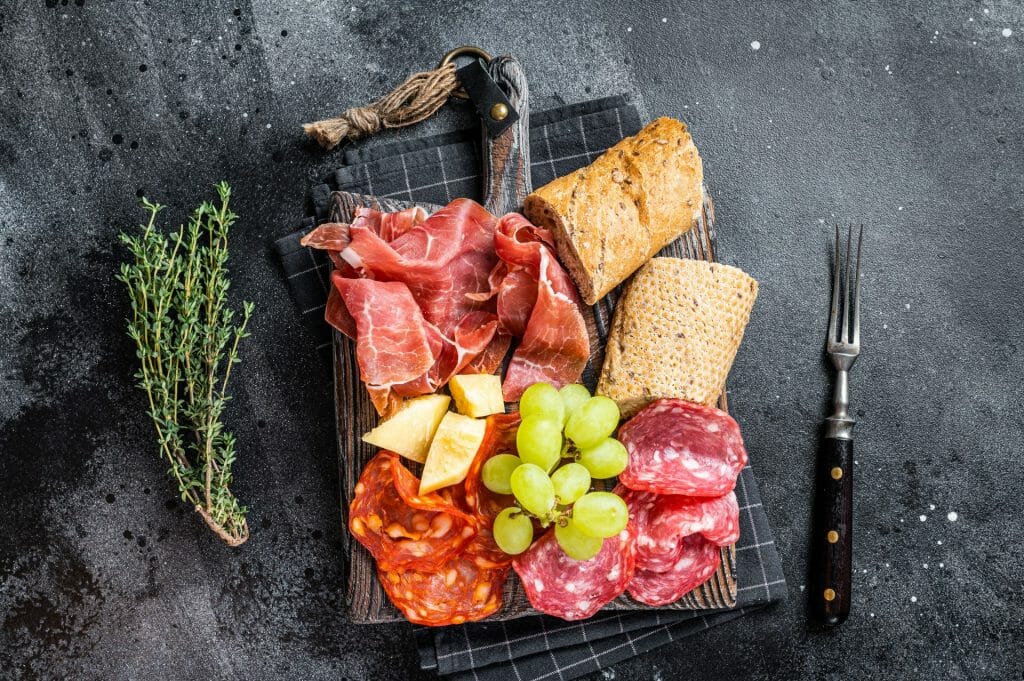
Frequently Asked Questions
What is the best bread for a cheese board?
The best bread for a cheese board is typically a crusty and neutral-flavored option that complements the various cheeses without overpowering their taste. Baguettes, rustic bread, and sourdough are popular choices due to their versatility and ability to pair well with different cheese varieties. It's important to consider the texture, flavor, and density of the bread to create a harmonious balance with the cheese.
Do you put bread on charcuterie board?
Yes, bread is commonly included on a charcuterie board. It serves as a versatile accompaniment that complements the flavors and textures of the charcuterie meats and cheeses. Adding bread provides a vehicle for enjoying the various components and allows for creative flavor combinations. Choose a bread that complements the overall charcuterie board and enhances the dining experience.
How do you serve bread with charcuterie board?
To serve bread with a charcuterie board, you can offer it sliced or in bite-sized pieces alongside the other components. Place the bread on the board or on a separate serving plate. Consider toasting or grilling the bread for added texture and flavor. Provide a bread knife or bread basket for guests to help themselves. The bread can be enjoyed on its own, used as a base for creating small sandwiches with charcuterie and cheese, or paired with spreads and dips. It's essential to select bread that complements the flavors of the charcuterie and enhances the overall experience.
What is the best bread for a grazing board?
When it comes to a grazing board, the best bread options are those that offer a variety of textures and flavors. Consider including a mix of bread types such as baguettes, sliced bread, crackers, and breadsticks. Opt for crusty breads like baguettes or artisan breads that provide a satisfying crunch. Additionally, choose breads with different flavors like sourdough, multigrain, or even flavored breads such as garlic or herb-infused varieties. The key is to offer a diverse selection that complements the other components of the grazing board and provides options for every palate.
Share Your Creations:
We’d love to see the charcuterie boards you create using our guide! Feel free to share your own creations in the comments or on social media, and tag us for a chance to be featured. And if you have any other ideas or tips for creating the perfect charcuterie board, we’d love to hear them.



